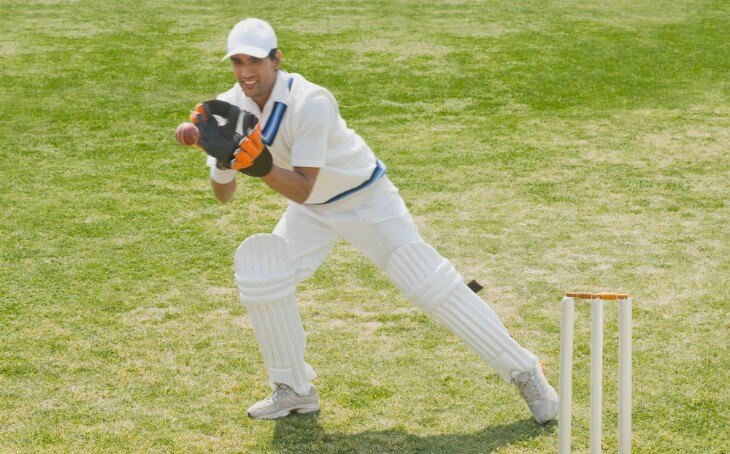- Understanding Cricket Betting Predictions
- Evolution of Data Analytics in Cricket
- Data Sources and Collection Methods
- Data Preprocessing Techniques
- Statistical Analysis in Cricket Betting
- Machine Learning Models for Predictions
- Key Performance Indicators (KPIs)
- Live Data Streaming and In-Play Betting
- Challenges and Limitations of Data Analytics
- Successful Case Studies in Cricket Betting Predictions
- Conclusion
Understanding Cricket Betting Predictions
Cricket, a sport often described as a game of uncertainties, has found an unexpected ally in the world of data analytics when it comes to betting predictions. As one of the most popular sports globally, cricket has a massive fan base and a corresponding betting industry that thrives on predicting match outcomes, player performances, and various in-game events. To comprehend the role of data analytics in cricket betting predictions, we must first grasp the fundamental concepts and objectives involved.
At its core, cricket betting predictions are all about forecasting outcomes, such as which team will win a match, how many runs a particular batsman will score, or the probability of a certain event occurring during a game. These predictions are driven by a combination of historical data, real-time information, and advanced analytical techniques. The primary aim is to assist bettors in making informed decisions and potentially increasing their chances of winning bets. To achieve this, data analytics plays a pivotal role in processing vast amounts of cricket-related data, extracting meaningful insights, and transforming them into valuable predictions.
Evolution of Data Analytics in Cricket
The integration of data analytics into cricket betting predictions represents a significant evolution in the world of sports betting. Traditionally, cricket betting relied heavily on intuition, personal knowledge, and a touch of luck. However, with the advent of modern technology and the availability of extensive data sets, the landscape has transformed dramatically.
The evolution began with the introduction of digital scoring systems, which allowed for more accurate and real-time data collection during matches. This data included information about player performance, pitch conditions, and game dynamics. As technology continued to advance, cricket's governing bodies and franchises began adopting data-driven strategies to enhance team performance. This shift towards data-driven decision-making gradually seeped into the betting industry, where punters saw the potential to gain an edge through the power of analytics.
Data Sources and Collection Methods
In the realm of cricket betting predictions, the reliability and comprehensiveness of data sources are paramount. Data analytics in cricket betting relies on a multitude of sources to gather the necessary information for making informed predictions. These sources encompass historical data repositories, live match feeds, player statistics, weather reports, pitch conditions, and much more.
Historical data, often referred to as "cricket archives," provides a treasure trove of information. These archives include records of past matches, player performances, team dynamics, and various statistical metrics. Cricket statisticians meticulously maintain these databases, ensuring that they are accurate and up to date. Live match feeds, on the other hand, offer real-time data, such as scores, wickets, boundaries, and bowling figures. The rapid availability of this information is crucial for in-play betting, where odds can change rapidly based on the unfolding match events.
The collection of data in cricket betting predictions is not limited to traditional cricket statistics alone. Weather conditions, for instance, can significantly influence a match's outcome, especially in formats like Test cricket, where matches can last up to five days. Pitch conditions, player injuries, and team news are also vital components in the data collection process. In recent years, technological advancements have enabled the integration of player wearables, such as fitness trackers and heart rate monitors, adding another layer of data for analysis. These diverse data sources, when processed and analysed effectively, contribute to more accurate and insightful cricket betting predictions.

Data Preprocessing Techniques
While collecting a vast amount of data is essential, it's equally crucial to preprocess this data before it can be utilised effectively for cricket betting predictions. Data preprocessing involves cleaning, transforming, and enhancing the raw data to ensure its quality and relevance.
Cleaning data involves identifying and rectifying errors or inconsistencies in the dataset. This can include dealing with missing values, correcting outliers, and addressing duplicate entries. In the context of cricket, data cleaning might involve resolving discrepancies in player names or rectifying scoring errors in historical records.
Once the data is cleaned, it needs to be transformed into a format suitable for analysis. This often involves converting categorical data into numerical values, standardising units of measurement, and scaling data to ensure that all variables are on a comparable scale. For instance, converting player names into unique numerical identifiers allows the data to be processed by machine learning algorithms. Additionally, data transformation can include aggregating data over specific time intervals, such as calculating batting averages or strike rates.
Enhancing data involves enriching it with external information that can provide additional context and insights. This could involve merging weather data with match data to understand how weather conditions impact player performance or incorporating historical head-to-head records between teams to predict match outcomes more accurately. Data preprocessing is a crucial step in the data analytics pipeline, as the quality of predictions heavily depends on the quality of the input data.
Statistical Analysis in Cricket Betting
Statistical analysis plays a pivotal role in cricket betting predictions by providing valuable insights into historical performance trends and probabilities. Through the application of various statistical techniques, analysts can uncover patterns, correlations, and anomalies in cricket data. This analysis enables the development of predictive models that underpin the betting predictions.
One fundamental aspect of statistical analysis in cricket betting is the calculation of key performance indicators (KPIs) for players and teams. These KPIs encompass metrics like batting averages, bowling strike rates, economy rates, and team win-loss ratios. Analysts use these metrics to assess player and team form, helping bettors make informed decisions. For instance, a batsman with a high average and strike rate in recent matches is more likely to perform well in the next game, while a bowler with a low economy rate is considered a valuable asset to their team.
Another critical statistical technique is regression analysis, which is used to identify relationships between various factors and match outcomes. Analysts can determine which variables, such as batting order, pitch conditions, or historical performance, have the most significant impact on match results. This information is then used to develop predictive models that assign probabilities to different outcomes, guiding bettors in making bets with favourable risk-reward profiles. In essence, statistical analysis in cricket betting transforms historical data into actionable insights, enhancing the decision-making process for both casual and professional bettors.
Machine Learning Models for Predictions
The advent of machine learning has revolutionised cricket betting predictions, enabling the development of highly sophisticated predictive models. Machine learning algorithms, such as decision trees, random forests, support vector machines, and neural networks, have the ability to analyse vast datasets and discover complex patterns that might be beyond the scope of traditional statistical methods.
One of the key strengths of machine learning models is their adaptability to different types of cricket formats. Whether it's predicting the outcome of a Test match, a One-Day International (ODI), or a Twenty20 (T20) game, machine learning algorithms can be fine-tuned to account for the unique dynamics of each format. For example, in T20 cricket, where the pace of the game is fast and unpredictable, machine learning models can quickly adjust their predictions based on in-game events, such as boundaries, wickets, and run rates.
Moreover, machine learning models can incorporate a wide range of features, including player performance data, historical head-to-head records, pitch conditions, and weather forecasts. These models continuously learn from new data, allowing them to adapt and improve over time. As a result, cricket betting predictions have become increasingly accurate and responsive to the ever-changing dynamics of the sport.
Key Performance Indicators (KPIs)
Key Performance Indicators (KPIs) are essential tools in the arsenal of cricket betting predictions. They provide a structured way to evaluate player and team performances, helping bettors make informed choices. In the world of cricket, several KPIs hold particular significance, as they offer valuable insights into a player's or team's capabilities.
One of the most critical KPIs for batsmen is their batting average. This statistic represents the average number of runs a batsman scores per innings and is a reliable indicator of their consistency and ability to contribute to their team's success. In addition to batting average, the strike rate is another crucial KPI for batsmen. It measures the rate at which a batsman scores runs and can help assess their ability to accelerate the scoring rate, which is especially important in limited-overs formats like ODIs and T20s.
For bowlers, key KPIs include bowling average and economy rate. A low bowling average indicates that a bowler takes wickets consistently, while a low economy rate signifies their ability to restrict runs. These KPIs are often used to evaluate a bowler's effectiveness, particularly in the context of Test cricket, where containment is as crucial as taking wickets.

Live Data Streaming and In-Play Betting
Live data streaming has transformed the landscape of cricket betting by enabling in-play betting, where punters can place bets on various aspects of a match while it is in progress. This real-time access to match data, including live scores, wickets, and boundaries, allows bettors to make dynamic and informed decisions during a game.
In-play betting introduces a new level of excitement and engagement for cricket enthusiasts. Punters can bet on outcomes such as the number of runs in an over, the method of the next dismissal, or the team's score at the end of a particular session. These bets often come with rapidly changing odds that reflect the evolving dynamics of the game, providing an adrenaline rush for those who enjoy fast-paced action.
To facilitate in-play betting, sportsbooks and betting platforms have invested in advanced data streaming technologies and user-friendly interfaces. These platforms offer live statistics, visualisations, and real-time odds adjustments, enhancing the overall betting experience. However, in-play betting also requires a deep understanding of the game and the ability to analyse live data quickly, making it a challenge for novice bettors but an exciting option for those well-versed in cricket and data analytics.
Challenges and Limitations of Data Analytics
While data analytics has undoubtedly enhanced cricket betting predictions, it is not without its challenges and limitations. Understanding and addressing these issues is crucial for both bettors and analysts to make more informed decisions.
One of the primary challenges is the reliability of data sources. Inaccurate or incomplete data can lead to flawed predictions. For example, discrepancies in player statistics or incorrect weather reports can significantly impact the accuracy of predictions. Ensuring data quality through rigorous data cleaning and validation processes is essential to mitigate this challenge.
Another limitation lies in the inherent uncertainty of cricket itself. Cricket is a dynamic sport with numerous variables, and unexpected events can occur during a match. Injuries to key players, sudden changes in pitch conditions, or unforeseen weather disruptions can render even the most sophisticated predictive models less reliable. Acknowledging this unpredictability is vital for bettors to manage their expectations and make responsible wagers.
Successful Case Studies in Cricket Betting Predictions
Examining successful case studies in cricket betting predictions provides valuable insights into the practical applications of data analytics in the sport. These examples illustrate the power of data-driven decision-making and the potential for substantial returns on investment in the world of cricket betting.
One notable case is the use of data analytics in team selection and player management by cricket franchises in T20 leagues. Teams like the Mumbai Indians in the Indian Premier League (IPL) have leveraged data analytics to identify talented players, assess their strengths and weaknesses, and strategise effectively during auctions. This approach has led to remarkable success, with the Mumbai Indians winning multiple IPL championships. Similarly, other franchises worldwide have adopted data analytics to enhance their competitive edge.
In addition to team performance, individual player analysis has also played a pivotal role in cricket betting predictions. Betting platforms and cricket analysts have used data-driven models to predict players' performances in specific matches or tournaments. These predictions extend to various aspects of a player's game, including runs scored, wickets taken, and even the likelihood of hitting a century. Successful cases of accurate player predictions have demonstrated the practical value of data analytics in assisting punters in making profitable bets.
Conclusion
In conclusion, the role of data analytics in cricket betting predictions is continually evolving, with a bright future ahead. As technology, data sources, and analytical techniques advance, the industry will continue to provide bettors with valuable insights and innovative tools for making informed wagers on this beloved sport.
For more information:


